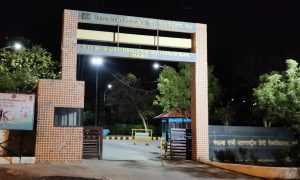The draft report on P 336 considers that it is worth highlighting ‘the implications for infrastructure, end-user hardware, software development, deployment and data.’ It is correctly reported that it requires considerable investment in basic infrastructure in electricity, hardware and connectivity.
We do agree that hardware and connectivity would be two areas where we have a challenging task ahead to provide service at satisfying levels. Particularly, connectivity has always been a problem all over the country with frequent disruptions and disconnections. How many of us do have the luxury of continuous connectivity while working online?
In spite of being one of the ‘technology giants’ in the world, we have not been able to ensure uninterrupted connectivity even in the metropolitan cities leave alone hundreds of municipal towns and thousands of villages.
As and when education is made fully technology based, the need for a much improved system of connectivity has to be in place. It is still not clear how and when we would be able to achieve the desired objective in this regard.
Though it is considered by many as the impending development and a basic necessity to have a full fledged technology based educational set up, we do strongly feel that it is a ‘not so good’ option for our nation – at least at the foundation / primary schooling.
Technology driven system can not by itself be a far better arrangement in the field of education. During the initial phases of formal education, it is the human interaction that would have a greater impact and would serve a larger purpose in strengthening human relations and more importantly human values.
The educationists and ‘modern thinkers’ believe that technology is the ‘one stop’ solution to all the problems that we enlist today in education. Right from eradication of corruption to ‘quality’ education, we are ready to give credit to technology and entrust the job to ‘machines’ rather than ‘men’ for effective and efficient administration of the affairs and for imparting ‘updated’ knowledge in various spheres. But this mad rush and relentless push for technology would only be detrimental to our well established of school / higher education.
It has been our most cherished tradition over so many centuries in the past that the ‘Guru – Sishya’ relationship is an integral part of the curriculum and that a permanent bond between the Teacher and his /her students (disciples) is the ‘trick’ or ‘magic’ that delivered the most desired results.
Technology based system completely disregards the standardised system of personal relationships and so, the much appreciated human interface is given a forced burial by introducing technology at all levels of learning. Is it good? Is it fair? Is it advisable? Above all, is it needed?
The draft report on P340 says that ‘the bulk of schools and colleges in remote and rural areas do not have access to the basics (electricity, hardware and reliable connectivity) and government must ensure that this situation is remedied at the earliest’.
We know there are indeed problems of access to connectivity or even hardware. But do any of these institutions have any difficulty in ‘access’ to electricity?
The government has claimed success, rightly too, in achieving 100% provision of electricity and in ensuring the ‘last mile’ connectivity to all the places of our country. There is not a single hamlet that has not been ‘reached’ that does not have electricity connection. When this is the case with every single house / family, is it correct to say schools and even colleges have the problem of access to electricity. The committee may think of deleting the term electricity from the list.
‘Setting up of a new National Educational Technology Forum’ (19.1) may help sort certain issues. This ‘will be a platform for the free exchange of ideas on the use of technology’. The report says that the NETF will have the following roles: a. Provide independent evidence-based advice to Central and State Government agencies on technology based interventions; b. Build intellectual and institutional capacities in educational technology; c. Envision strategic thrust areas in this domain and d. Articulate new directions for research and innovation.’
Similarly, ‘The National Repository of Educational Data will maintain all records related to institutions, teachers and students in digital form’.
The suggestions no doubt seem to be acceptable. But why should it be National Forum and National Repository? Why should it not be a State Forum or State Repository? The emphasis has always been a centralised, nationwide organisation and the committee has not bothered to entrust anything with the State governments. This approach has totally ignored and intentionally removed the healthy participation of local authorities in the field of education.
Chapter 20 aims to provide access to Vocational Education to at least 50% of all learners by 2025. ‘The 12th Five Year Plan (2012 – 17) estimated that less than 5% of Indian workforce in the age group of 19 – 24recieved formal vocational education. In comparison, the USA has 52%, Germany has 75% and South Korea has 96%. These numbers underline the need to hasten the spread of vocational Education in India – says the draft report.
It is very rightly observed that ‘vocational education distinguishes itself from academic education in the close linking of knowledge and skills to specific practical challenges and work situations in the economy.’ And hence it is proposed to make it an integral part of school and higher education.
Vocational education has been less desirable to students and the matter of social status hierarchy has vexed higher education in multiple ways and it has significantly influenced the public perception– according to the report.
It is true that students take it as the last resort to take up a vocational course. The attention of the media has never turned towards Industrial Training Institutes and even the so called educationists treat ITIs as something detestable. We need an urgent, drastic change in the atrocious behaviour in our midst not willing to appreciate the constructive roles that the training courses offered in ITIs play in the growth of our economy.
Government of India last year did a great, noble job in declaring the ITI study to be taken as educational qualification. These ITI courses remained neglected for so long and finally the Government took the initiative on its own to attach the value that it richly deserves. The announcement of the GOI in this connection has gone almost unnoticed. ( I had written an article about it in a leading Tamil Daily appreciating the most responsible move of the Government)
The draft report suggests many good measures like collaborating the ITIs ‘with local industries and businesses, farms, hospitals, NGOs and all other facilities; creating curriculum and supplementary educational materials that are adapted to local needs; relevant and meaningful integration of vocational education into school and higher education through skills analysis and mapping of local opportunities; integration of work of local craftspersons and artisans into the curriculum along with measures to disseminate their work more widely’. (P 360 – 361)
The points/ recommendations of the Policy report on Vocational Education are truly too good and the implementation of them in right earnest would fetch a lot of long standing benefits to millions of ITI candidates. It is a job well done. Kudos!
Let us move on to ‘Adult Education’.
(to continue…
Baskarankrishnamurthy
Mail: [email protected]




























 WhatsApp us
WhatsApp us
Pingback: judi online
Pingback: 카지노사이트
Pingback: KIU-Engineering School
Pingback: press release distribution of press release
Pingback: 부산달리기
Pingback: british dragon gear
Pingback: live cams
Pingback: Best Drones Under $500
Pingback: full size fake skeleton
Pingback: كلمات
Pingback: outdoorpaint.info
Pingback: fake tag heuer grand carrera watch
Pingback: paito hongkong
Pingback: buy levitra online no script use for male enhancement overnight delivery
Pingback: buy cbd oil
Pingback: digital transformation companies
Pingback: quality equation
Pingback: 토토
Pingback: https://library.kiu.ac.ug/
Pingback: DevOps Services
Pingback: Pioneer AVH-X2500BT manuals
Pingback: dumps + pin site
Pingback: replicanice.com
Pingback: KIU-Library
Pingback: best CBD oil
Pingback: exchange online fiyat
Pingback: nova88
Pingback: Barbiediamond Livejasmin
Pingback: tools for test automation
Pingback: grape ape strain,
Pingback: jav
Pingback: mushroom dispensary Oregon
Pingback: เพื่อนแท้เงินด่วน มีนบุรี
Pingback: sbobet
Pingback: second brain template